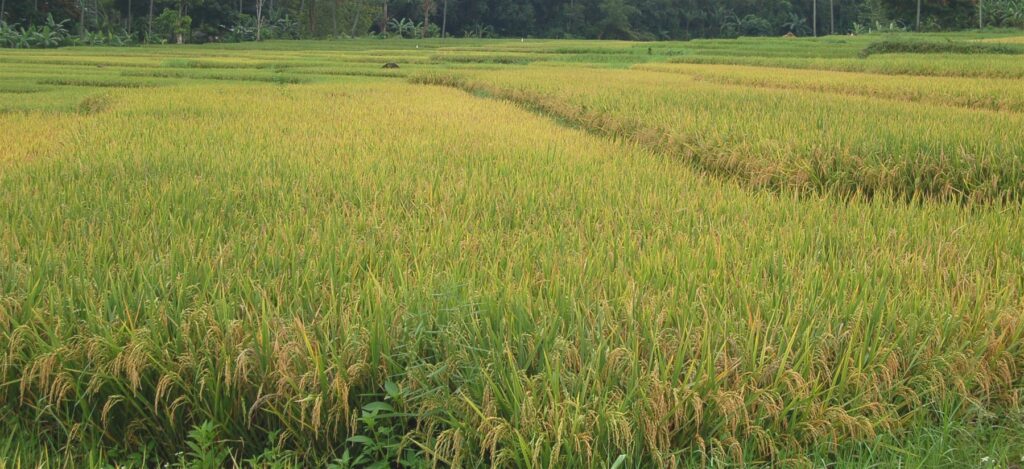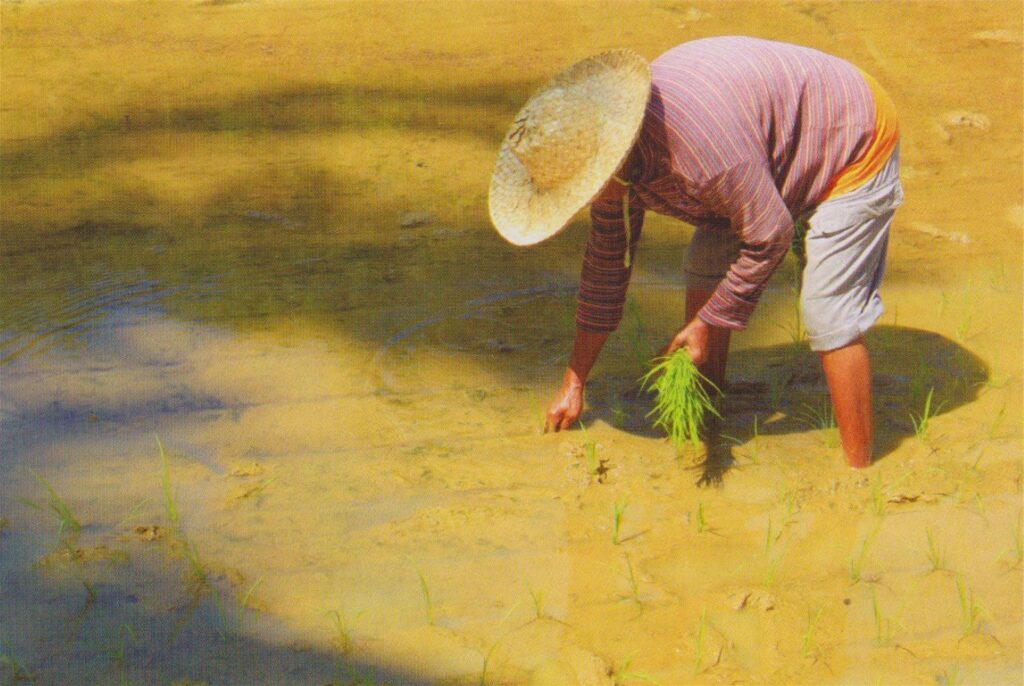GROWING RICE THE ORGANIC WAY
Text and Photos by Henrylito D. Tacio
Mention Bohol and what comes to mind is the 1,776 Chocolate Hills spread over an area of more than 50 square kilometers, the endangered tarsier (touted to be the oldest mammal inhabiting the earth), and “Sandugo,” the blood compact between the Spanish explorer Miguel López de Legazpi and chieftain Datu Sikatuna.
Thus, it’s hard to imagine for visitors to think of organic rice being planted in the country’s tenth largest island (with a land area of 4,117.26 square kilometers and a coastline 261 kilometers).
However, a report from the Philippine Information Agency (PIA) said that farmers and non-government organizations in the island have been breeding since 1998 more than 200 organic rice “accessions” in the search for the most suitable breed fitting the challenges of climate adaptation.

Dr. Marina Labonite, the research for development director at the Bohol Island State University (BISU), said climate change-resistant local upland rice were interbred with other breeds to produce organic rice that could stand the heat, brave the floods, and withstand all these without inorganic fertilizers.
According to Dr. Labonite, the breeds are locals so they can’t be called as varieties yet. These are placed in a seed bank, which serve as back up supplies for farm trials “to allow farmers to sow them in seedbeds for their own production,” she pointed out.
Today, Bohol is mobilizing to become a hub of the aromatic and nutritious organic rice.
“Local farmers are now gearing towards the production of organically-grown rice to respond to the needs of healthier living and to the country’s drive towards food security and environmental protection,” reports “Filling Up The Senses: Bohol’s Tourism and Organic Rice Production.”
The newly-released publication is released by the Philippine Council for Agriculture, Aquatic and Natural Resources Research and Development (PCARRD), a line agency of the Department of Science and Technology (DOST). It features the success stories of two farmer-scientists – called “Magsasaka Siyentista” (MS) – who made the difference in growing organic rice.
“Farming aromatic rice the natural, organic way helped improve the quality of my farm’s soil and increase my income,” Primitivo R. Sarigumba, a 51-year-old farmer from Jimilian, Loboc.
The commerce graduate with a major in accountancy had been farming for 25 years already but it was not until he adopted organic farming that he found he could effectively decrease his production costs through the use of organic fertilizer.
“I didn’t worry about the high cost of seedlings because I knew the very low cost of organic fertilizers would balance off the costs,” said Sarigumba, who is now a member of science and technology-based farm (STBF) project which allowed him to further explore the world of farming and discover new ways of increasing his yield.
The other farmer – Florencio L. Gentallan – is already deceased. But the former civil servant was being looked up by farmers in the municipality of Maribojoc because of his influence in helping them improve their own farming methods.
Gentallan’s advocacy on natural farming resulted in the adoption of his farming practices by 30 local farmers. “Going organic is going healthy and wise,” he was quoted as saying. “With the utilization of natural materials from our farm, we are sure that what we consume is chemical-free. Not only that, we are also able to reduce the costs of our farm inputs; thereby increasing our income.”
The PCARRD publication features the science and technology interventions the two farmers adopted in growing organic rice. “Through research and the application of new technologies, the traditional practices of the farmers were modified and improved,” the publication explained.
Soil analysis: Most farmers neglect soil analysis, which is considered as critical in evaluating the soil pH and fertility level. With the STBF, the two farmers were convinced of the advantages of the technology.

“Soil analysis reduces farm costs by preventing excessive and unnecessary application of fertilizers and avoiding nutrient imbalance in the field,” the PCARRD publication pointed out.
Land preparation: Rice straw from the previous cropping is scattered in the field, which is irrigated for two days until plowing time. After plowing, the mixture of chicken dung and vermicompost are dispersed.
“Using residues like rice straw, chicken dung, and vermicompost reduce farm costs by up to 74%,” the PCARRD publication said. In addition, these farm resources nourish the crops and the soil as well.
Seeding and transplanting: Planting only one to two 14-day old seedlings per hill reduces the number of seedlings needed in the farm – compared with the usual practice of planting four to seven 21- to 30-day old seedlings.
“The 25 centimeters by 25 centimeters distance between hills reduced the farmers’ need to 50%; thereby, reducing costs. Also, the competition among plants was also decreased,” the PCARRD publication said.
Variety: In Loboc, the varieties used on aromatic rice production are black rice, basmati, and malido. In Maribojoc, it’s the KACEDOB variety, which stands for “Kang Seding, gitanum in Dod0y ug inabagan ni Boy” (From Seding, planted by Dodoy with the assistance of Boy).
Fertilization: Only natural and organic fertilizers are used.
“When you use chemical fertilizers in your field, your gross income is high; but when you start computing your net income – by deducting all your expenses – you will realize how little your net income is. The main reason is the high cost of inorganic fertilizer,” explained Sarigumba.

Pest and disease management: Pests and diseases can be checked by any of the following: natural, cultural, botanical, ecological, and chemical approaches. “All these measures except the latter, when integrated, become a perfect blend of pest management technology, which effectively curbs pesticide usage in the farms,” the PCARRD publication noted.
Post-production: Traditionally, farmers harvest rice manually, thresh the harvested crops with pedal threshers, and clean the grains with a winnowing basket. Instead, the STBF recommends an automatic operation which uses the mechanical blower, which can shorten the operation to two days and preserve the good quality of the grains.
As a result of these practices, Gentallan increased his net income from P20,956 to P89,353 for one year (two croppings). On the other hand, Sarigumba’s net income more than doubled – from P25,400 to P59,600 for one year.
“The success of the STBF projects on organic aromatic rice production is proof enough of the province’s power to truly satisfy both its local and visiting tourists not only through its rich sceneries, but also through its healthy staple food,” the PCARRD publication concluded.

